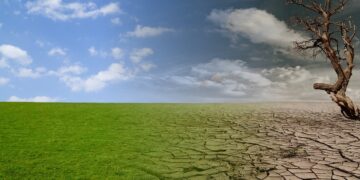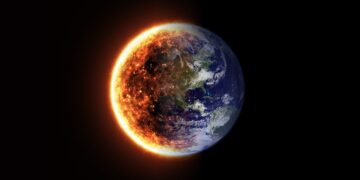Unveiling the Heat: How Global Warming is Reshaping Our Planet
Global warming, a significant shift in global temperatures and weather patterns, is one of the most pressing issues of our time. It is a complex environmental issue that has far-reaching effects on our planet, influencing not only the climate but also ecosystems, wildlife, and human populations. As the intricate dynamics of global warming continue to unfold, understanding its impact is more crucial than ever for taking informed action towards sustainability.
The Science Behind Global Warming
At its core, global warming results from increased concentrations of greenhouse gases like carbon dioxide, methane, and nitrous oxide in the Earth’s atmosphere. These gases trap heat from the sun, preventing it from escaping back into space, and thus warming the planet. This phenomenon is largely driven by human activity, including the burning of fossil fuels, deforestation, and industrial processes.
The evidence for rapid climate change is unequivocal, with the last few decades witnessing unprecedented rises in global average temperatures. Scientific studies show that the global average temperature has increased by at least 1.1 degrees Celsius since the 19th century.
Effects of Global Warming on Climate Patterns
Global warming influences climate patterns in profound ways. One of the most visible consequences is the increase in extreme weather events. This includes more intense and frequent hurricanes, floods, droughts, and wildfires. For instance, the intensity of hurricanes in the Atlantic has increased as warmer ocean temperatures fuel more powerful storms.
Beyond extreme events, global warming is also altering seasonal cycles and precipitation patterns. Many regions are experiencing shifts in the timings of the seasons, with springs arriving earlier and winters becoming shorter and milder. These changes can disrupt the natural balance, affecting wildlife behavior and plant blooming periods.
Impact on Ecosystems and Biodiversity
Global warming poses a significant threat to biodiversity and ecosystems. Rising temperatures and changing landscapes force species to migrate to cooler areas, potentially leading to widespread species extinction. Coral reefs, which are highly sensitive to temperature changes, are suffering from mass bleaching events and die-offs, impacting marine biodiversity and fisheries.
Terrestrial ecosystems are not spared either. Forests, for instance, are experiencing higher mortality rates and altered growth patterns due to increased temperatures and changing precipitation levels. This not only affects the wildlife dependent on these habitats but also reduces the forests’ ability to store carbon, further exacerbating global warming.
Effects on Human Populations
Humans are directly affected by global warming through environmental changes that impact agriculture, water resources, and health. Heatwaves and altered weather patterns can compromise food security by reducing crop yields and affecting livestock. Additionally, water scarcity is becoming more prevalent as precipitation becomes less predictable and glaciers, which many people rely on for fresh water, continue to melt.
Health issues related to global warming are also on the rise. Increased temperatures can exacerbate cardiovascular and respiratory diseases, and expanded ranges of vectors like mosquitoes introduce diseases to new areas. Furthermore, extreme weather events pose immediate dangers to human safety and can have long-term psychological impacts on affected communities.
Addressing Global Warming: Mitigation and Adaptation
Mitigating global warming involves reducing the flow of greenhouse gases into the atmosphere. This can be achieved through energy efficiency, expanding renewable energy sources, and developing new technologies to capture carbon. International agreements like the Paris Agreement play a crucial role in coordinating global efforts for climate change mitigation.
Adaptation strategies are equally important and involve making adjustments in ecological, social, and economic systems in response to actual or expected climatic stimuli. This can range from constructing flood defenses, redesigning agricultural practices to suit a changing climate, to altering water management systems to accommodate for changes in water availability.
Conclusion: Our Role in Shaping the Future
Global warming continues to reshape our planet in profound and potentially irreversible ways. However, by understanding the causes and consequences of global warming, we can better prepare and implement strategies to reduce risk, protect our environment, and secure a sustainable future.
It is imperative for each individual, community, and nation to recognize their role in combating global warming. Through informed actions and collaborative efforts, it is possible to curb this global challenge and foster a resilient planet for future generations.
By addressing both mitigation and adaptation, we can indeed steer our global society towards a more sustainable and equitable future, ensuring that global warming does not dictate the boundaries of our resilience or creativity in safeguarding the planet.
Frequently Asked Questions About Global Warming
-
What is the main cause of global warming?
The primary cause of global warming is the increased concentration of greenhouse gases produced by human activities like burning fossil fuels, deforestation, and industrial processes. -
How does global warming affect animals?
Global warming can disrupt habitats, forcing animals to migrate and adapt, reduce food availability, and increase vulnerability to disease, potentially leading to extinction. -
What can I do to help combat global warming?
Reducing your carbon footprint, supporting and adopting renewable energy sources, and advocating for policy changes are effective ways to combat global warming.










